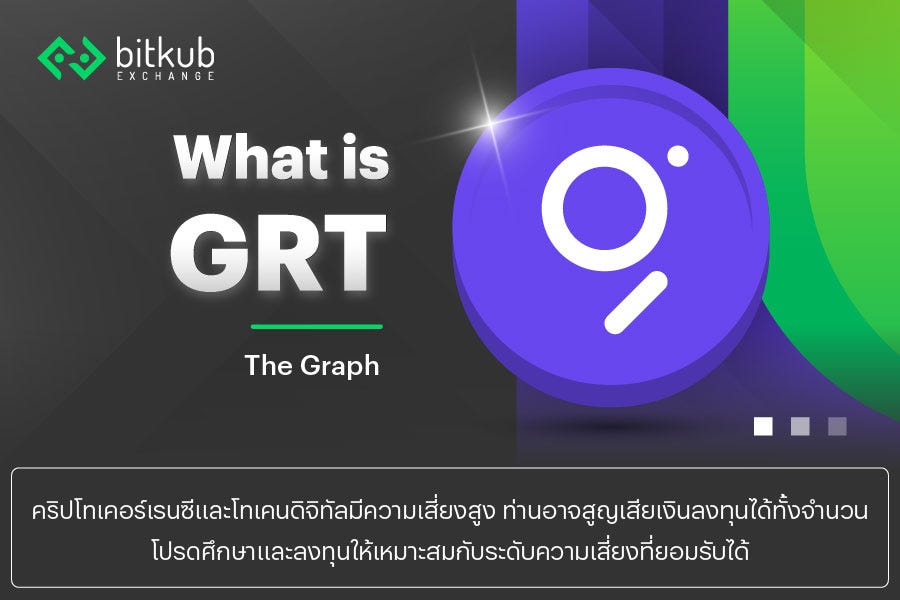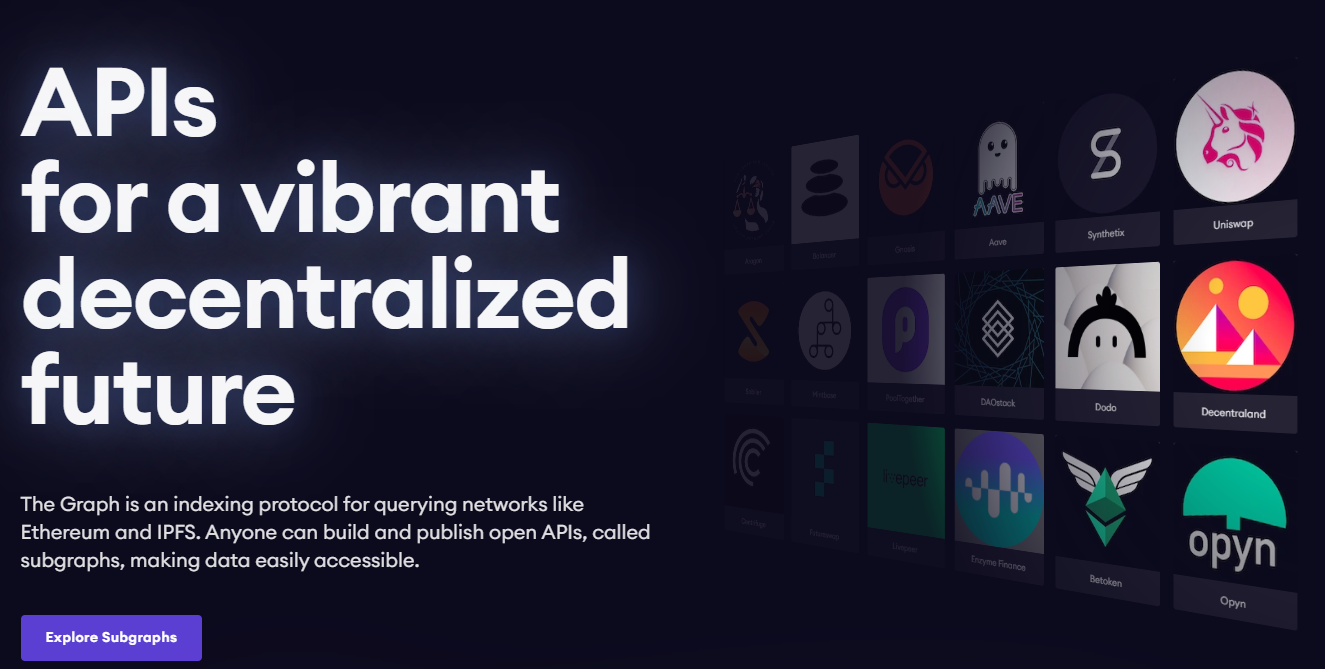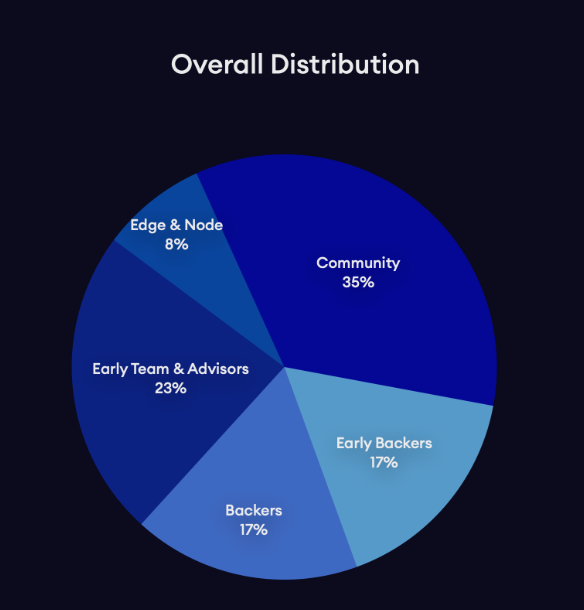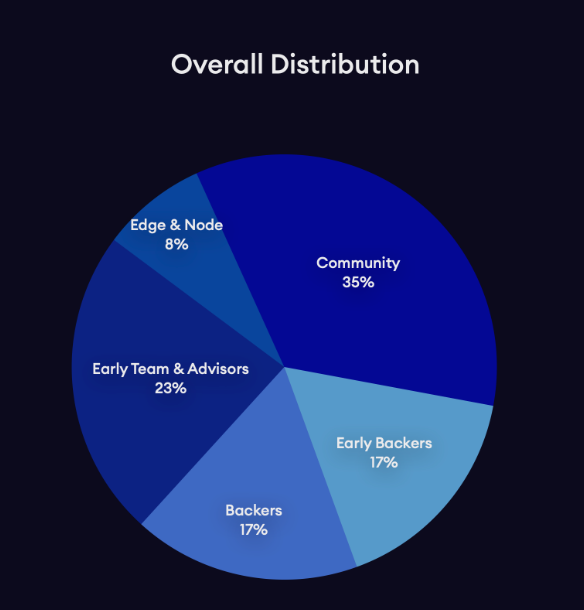บทความ
รู้จัก GRT ผู้เรียบเรียงข้อมูลบนบล็อกเชนเพื่อการพัฒนา Web3

ในบทความนี้เราจะมาทำความรู้จักกับเหรียญ GRT หรือ The Graph ที่ถือเป็นอีกหนึ่งเครื่องมือสำคัญสำหรับนักพัฒนาที่สนใจการสร้างแอปพลิเคชันขึ้นบนบล็อกเชนและ Web 3 กันเถอะ!
GRT คืออะไร?

เหรียญ GRT คือโทเคนมาตรฐาน ERC-20 บน Ethereum และเป็นโทเคนหลักของ The Graph ซึ่งเป็นระบบที่สามารถช่วยเหลือบล็อกเชนต่าง ๆ เช่น Ethereum ในการคัดกรอง จัดเก็บ และตรวจสอบข้อมูลเพื่อให้นักพัฒนาแอปพลิเคชันบนบล็อกเชนหรือ Web3 สามารถเข้าถึงและนำข้อมูลไปใช้ได้อย่างมีประสิทธิภาพผ่านการดึง API ที่เรียกว่า Subgraphs
โดยปัจจุบัน มีแอปพลิเคชันบนบล็อกเชนมากมายที่เลือกใช้ The Graph เพื่อเพิ่มประสิทธิภาพ ไม่ว่าจะเป็น Uniswap, Synthetix, AAVE, Balancer, Decentraland ฯลฯ และยังมี Subgraphs มากกว่า 3,000 รายการ
การทำงานของ The Graph

The Graph ใช้ระบบฉันทามติแบบ Proof-of-Stake และมีการแบ่งหน้าที่ของผู้ใช้หลากหลายเพื่อให้เกิดความเป็นระเบียบในการคัดกรองและตรวจสอบข้อมูล ดังนี้
1.Indexers — ทำหน้าที่ตรวจสอบข้อมูล โดยต้องวางเหรียญเป็นสินทรัพย์ค้ำประกัน (Staking) เพื่อรับสิทธิ์ในการทำหน้าที่นี้ ผู้ใช้ในกลุ่มนี้จะได้รับเหรียญเป็นรางวัลตอบแทนสำหรับการทำงาน
2.Curators — มีหน้าที่สร้างกราฟย่อย (Subgraph) โดยต้องวางเหรียญค้ำประกันเช่นกัน มีหน้าที่คอยส่งสัญญานเตือนข้อมูลที่น่าสงสัย หากยิ่งส่งสัญญานเร็ว ก็จะยิ่งได้รับเหรียญตอบแทนมากขึ้น
3.Delegators — คือผู้ทำหน้าที่เลือกตัวแทนที่ตนเองอยากสนับสนุนจากกลุ่ม Indexers จากนั้น Delegators จะได้รับรางวัลส่วนหนึ่งจากการทำงานของ Indexers
4.Consumers — คือผู้ใช้บริการของแพลตฟอร์ม ซึ่งอาจเป็นนักพัฒนาแอปพลิเคชัน โดยผู้ใช้บริการต้องจ่ายค่าธรรมเนียมในการใช้บริการ ค่าธรรมเนียมนั้้นก็จะเป็นผลตอบแทนให้กับผู้ใช้อีกสามตำแหน่งข้างต้น
นอกเหนือจากค่าธรรมเนียม ผู้ใช้ในกลุ่ม Indexers และ Delegators ยังสามารถรับผลตอบแทนในรูปแบบของรางวัลจากการจัดเรียงข้อมูล หรือ Indexing Reward โดยระบบจะมีการแบ่งสัดส่วนการทำงานในบล็อกออกเป็นช่วง ๆ หรือ Epoch เพื่อจัดแจงรางวัลการทำงานให้เหมาะสม
The Graph ยังมีระบบป้องกันกรณีมีผู้ประสงค์ร้ายต่อระบบ เช่น Indexers อาจถูกยึดเหรียญ GRT ที่วางค้ำประกันไว้ หากส่งข้อมูลที่ไม่เป็นจริงเข้ามาในระบบ ส่วน Curators และ Delegators อาจเผชิญกับค่าธรรมเนียมที่สูงขึ้นหากมีความประสงค์ร้ายต่อระบบ และ Curators ก็อาจถูกลดรางวัลที่ได้รับหากคุณภาพการทำงานตกต่ำลง เป็นต้น
ทีมผู้สร้าง The Graph

The Graph ถูกสร้างขึ้นโดยทีมผู้เชี่ยวชาญที่เคยร่วมงานกับบริษัทเทคโนโลยีและบล็อกเชนชั้นนำของโลก อาทิ Ethereum Foundation, OpenZeppelin และ Decentraland โดยมีสมาชิกคนสำคัญคือ Yaniv Tal (ซ้าย) ดำรงตำแหน่ง Project Lead และ Brandon Ramirez (ขวา) ในตำแหน่ง Research lead
ซึ่งทั้ง 2 เคยร่วมกันก่อตั้งสตาร์ทอัพที่พัฒนาเครื่องมือสำหรับนักพัฒนา โดยทั้งคู่ใช้เวลาส่วนใหญ่ในการทำงานไปกับการพัฒนาผลิตภัณฑ์ที่เกี่ยวกับระบบ API และ Framework สำหรับ Database ซึ่งต่อมาก็กลายเป็นพื้นฐานของ The Graph
หน้าที่ของโทเคน GRT
GRT ถูกใช้บนระบบ The Graph ในการวางเป็นสินทรัพย์ค้ำประกันโดยผู้ใช้กลุ่มต่าง ๆ เพื่อรับสิทธิ์ตรวจสอบข้อมูลที่ถูกเพิ่มลงแพลตฟอร์ม
นอกจากนี้ เหรียญ GRT ยังเป็นรางวัลตอบแทนการทำงานของผู้ใช้ โดยจะถูกจัดแจงเป็นสัดส่วนตามปริมาณเหรียญค้ำประกันไว้ และคุณภาพของการทำงาน
การกระจายโทเคน GRT
อ้างอิงจากบทความบนเว็บไซต์หลัก The Graph โทเคน GRT ถูกสร้างออกมาให้มีจำนวน (Supply) จำกัดที่ 10,000,000,000 GRT โดยในช่วงเปิดตัวโปรเจกต์ โทเคน GRT ได้ถูกปล่อยลงสู่ตลาดประมาณ 1,224,999,438 GRT หรือประมาณ 12.5% ของจำนวนโทเคนทั้งหมด และจะค่อย ๆ ทยอยปล่อยออกสู่ตลาดเป็นระยะเวลาสูงสุด 10 ปี โดยแบ่งการกระจายโทเคนออกสู่ส่วนต่าง ๆ ตามภาพต่อไปนี้

35% — กระจายให้กับชุมชน (Community)
17% — กระจายให้กับผู้สนับสนุนกลุ่มแรก ๆ (Early Backers)
17% — กระจายให้กับผู้สนับสนุน (Backers)
23% — กระจายให้กับทีมพัฒนาและที่ปรึกษาชุดแรก ๆ (Early Team & Advisors)
8% — กระจายให้กับ Edge & Node Ventures, Inc. บริษัทผู้สร้าง The Graph (Edge & Node)
อ้างอิง Coinmarketcap, Messari, Coingecko
_________________________________________
มาเรียนรู้เรื่อง บิตคอยน์ (Bitcoin) และ Cryptocurrency ที่จะช่วยให้คุณเข้าใจโลกของคริปโทฯ ได้ดีขึ้น ที่ Bitkub Blog
หากคุณยังเป็นมือใหม่ ค้นหาข้อมูลเพิ่มเติมได้ในบทความ “แหล่งความรู้ มือใหม่หัดเทรดคริปโต เริ่มต้นที่นี่”
*คริปโทเคอร์เรนซีและโทเคนดิจิทัลมีความเสี่ยงสูง ท่านอาจสูญเสียเงินลงทุนได้ทั้งจํานวน โปรดศึกษาและลงทุนให้เหมาะสมกับระดับความเสี่ยงที่ยอมรับได้
**สินทรัพย์ดิจิทัลมีความเสี่ยง โปรดศึกษาและลงทุนให้เหมาะสมกับระดับความเสี่ยงที่ยอมรับได้
***ผลตอบแทนของสินทรัพย์ดิจิทัลในอดีตหรือผลการดําเนินงานในอดีต มิได้เป็นสิ่งยืนยันถึงผลตอบแทน ของสินทรัพย์ดิจิทัลหรือผลการดําเนินงานในอนาคต”
_________________________________________
Get to Know GRT, the Data Organizer for Web3 Development
In this Article, we will learn about GRT or The Graph, another significant tool for blockchain application and Web3 Developers!

What is GRT?
GRT is the ERC-20 token on Ethereum, and is the main token of The Graph which is a systematic supporting mechanism for various blockchains, like Ethereum, with the goal of filtering, indexing and storing information to be effectively used in Decentralized Applications (DApps) and Web3 development via API called Subgraphs.
Currently, there are many applications on blockchain that utilizes the Graph including Uniswap, Synthetix, AAVE, Balancer, Decentraland, etc. and more than 3,000 subgraphs on the platform.
How does The Graph work?
Nodes in the Graph platform create consensus through the Proof-of-Stake algorithm and are divided into four job titles to ensure effectiveness in the efforts of indexing and querying data.
1.Indexers — provide indexing and querying related-duties after staking their GRT tokens. They are awarded through fees and rewards.
2.Curators — deviates subgraphs, after staking their coins, to signal subgraphs and progress of their work. The earlier they signal changes of the subgraph, the more they will be rewarded.
3.Delegators — nodes that select or delegate an Indexer to support. They will receive a portion of query fees provided to Indexers.
4.Consumers — end-users, possibly DApp developers that entried their request into the Graph platform and distribute various fees and rewards to the other nodes.
Other than query fees and such, users in the Indexer and Delegator groups are also able to receive Indexing Rewards in return for their duties of querying and indexing.
The platform will distribute such fees in accordance with the predetermined epochs of the blocks and the quality of the nodes’ work.
Furthermore, Indexers can also have their stake GRT coins slashed in response to the system identifying malicious acts as a defensive mechanism.
As for Curators and Delegators, they would be faced with additional fees to disincentivize wrongful doings on their part. Also, Curators receive lessened fees in accordance with low-quality subgraph curation.
Developers of The Graph

The Graph was developed by the team of technology experts in many fields including blockchain. The team members consist of professionals from Ethereum Foundation, OpenZeppelin, and Decentraland, with key members being Yaniv Tal (left), Project Lead, and Brandon Ramirez (right), Research lead.
The pair have co-founded a start-up that develops tool for developer. The start-up specializes in products that related to API and Framework for Database which later become the foundation of The Graph.
What is GRT Token used for?
GRT work tokens are used in payments and votes. Users lock their tokens are stakes to be able to provide query and index services on the platform.
Also, GRT tokens are used in awarding various users for their efforts provided on the platform. They are allocated in accordance with the initially staked amount and quality of work provided as well.
GRT Token Allocation
According to the article on The Graph main Website, GRT was created with the limited supply of 10,000,000,000 GRT. At launch, 1,224,999,438 GRT or 12.5% of the total supply was distributed to the market, while the remaining supply will be distributed regularly for 10 years. The token allocations are as below:

35% — for Community
17% — for Early Backers
17% — for Backers
23% — for Early Team & Advisors
8% — for Edge & Node Ventures, Inc.
Reference Coinmarketcap, Messari, Coingecko
_________________________________________
Let’s learn about the world of crypto at Bitkub Blog and if you are a beginner. Find out more in the article.
- Cryptocurrency and digital tokens involve high risks; investors may lose all investment money and should study information carefully and make investments according to their own risk profile.
- Digital assets involve risks; investors should study information carefully and make investments according to their own risk profile.
- Returns/Past Performance does not guarantee future returns/performance.
ที่มา:
Medium